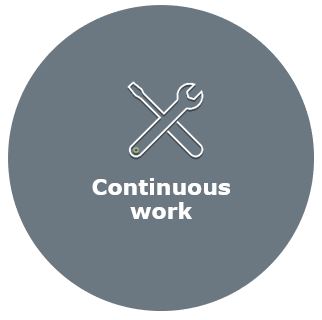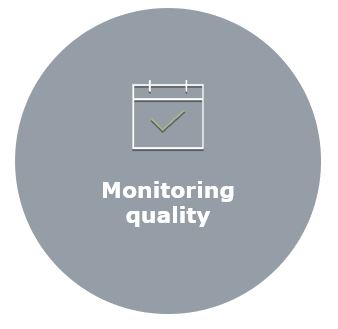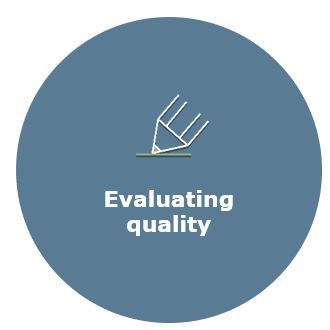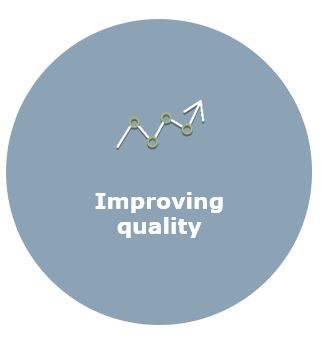Quality assurance for research

The profile at the University of Borås with complete environments provides, in a national as well as an international perspective, very good conditions for being a leader in a number of areas. The goal is to offer education from a basic level up to an advanced level as well as research studies in all areas within the frames of the complete academic environments. In the complete academic environments research and education require and enrich each other, and collaboration with the society and a priority of sustainable development permeate the research activities. Good conditions for both stability and renewal of research activities are ensured by quality assurance of the research performed.
The quality assurance and quality development of research is based on the following frameworks:
- The Higher Education Act, (HL)
- The Swedish Higher Education Institutions (SUHF) framework, which contains basic components as well as themes and conditions that the quality system should cover.
- European Charter for Researchers
- The University's goals and strategies
Research as such already has established and built-in forms of quality assurance. Peer-review with written opinions and seminar discussions with designated reviewers (reviewer, opponent, discussant) are the basic tools. The university's own quality work does not replace or repeat these established methods, but is intended to be part of the systematic work of ensuring and developing quality in all research conducted at the university.
The systematic quality work for research at the University of Borås is regularly evaluated by the University Chancellor's Office, UKÄ. The purpose of monitoring and evaluation, locally or where applicable nationally, is to ensure and develop the quality of the research conducted.
The parts of the quality process
The above picture of the quality process provides an overview of how the University of Borås systematically ensures quality and quality development of the research conducted through specific activities.
The quality system is made up of five interacting components that together constitutes a whole. All parts are interconnected through continuous communication and dialogue that transmits the information generated by the quality system between different levels and units at the university. This makes the system transparent and sharp. The five components are:
The prerequisites are the starting points on which the quality work is based. The foundation is the freedom of research, the university's value foundation and the quality culture that permeates the research activities in all their parts.
Quality in research activities is achieved by integrating the quality work into the daily tasks and interactions of the employees'. Employees should be involved and committed in the processes that develop research quality.
The prerequisites include a systematic monitoring and evaluation of the university's research and the resource allocation to research and research support.
Prerequisites also include the processes that ensure the appropriate recruitment and skills development of its employees and ensure that the correct information about the research conducted reaches students, employees, the general public and other identified stakeholders.
The University's researchers have access to advice on good research practice via an Ethics committee.
The University of Borås has joined and been approved to follow the European Union Researchers and Guidelines for the Recruitment of Researchers.
The University's work on the following areas is important in order to establish the right conditions for the research:
- Policy, strategies and goals
- Responsibility and delegations
- Activity plan and annual report
In addition, a number of activities that secure the prerequisites for research are included. Examples of areas where these activities are realized are given below:
- Recruitment
- Competence plans
- Research environment
- Infrastructure
- Funding applications
- Research based education
Back to the parts of the quality process
The implementation consists of the daily performed activities at the university which affect and drive quality development in all parts of the research work.
Examples of continuous quality work are included in areas such as competence development, application of research funding and publication of research results. In addition, focus will be on the work with collaboration, sustainability, internationalization and gender equality. All researchers at the university should be involved in the continuous quality work. The quality assurance work must to the greatest extent possible be based on uniformly designed routines. Uniformity creates clarity, comparability and efficiency.
The framework for continuous quality work also includes the importance of education for research quality, development and renewal. This is described in the document Riktlinjer för samband mellan forskning och utbildning vid Högskolan i Borås (See below).
A number of different activities are part of the continuous quality work. A few examples of areas where these activities are realized are given below:
Competence
- Collaboration with the surrounding society
- Supervision
- Internationalization
- Gender equality work
- Sustainable development
- The importance of research based education
Back to the parts of the quality process
Quality monitoring of the university's research refers to outcomes and the data continuously collected and analysed. The university then uses relevant information generated by the various parts of the quality system to ensure that all research activities conducted are of high quality.
The system systematically collects key figures and other relevant information for analysis of the needs that exist at the various levels of the university. This is done on an ongoing basis and is part of the university's operating cycle.
The monitoring includes both quantitative and qualitative data, such as bibliometry and various analyses. Monitoring is done in connection with activity dialogues from management level down to individual research groups. Further degradation to each individual researcher and employee is made via, for example, employee interviews. The image below illustrates how information is intended to flow from the governing board down to the individual employee and then back from the individual employee up to the governing board.
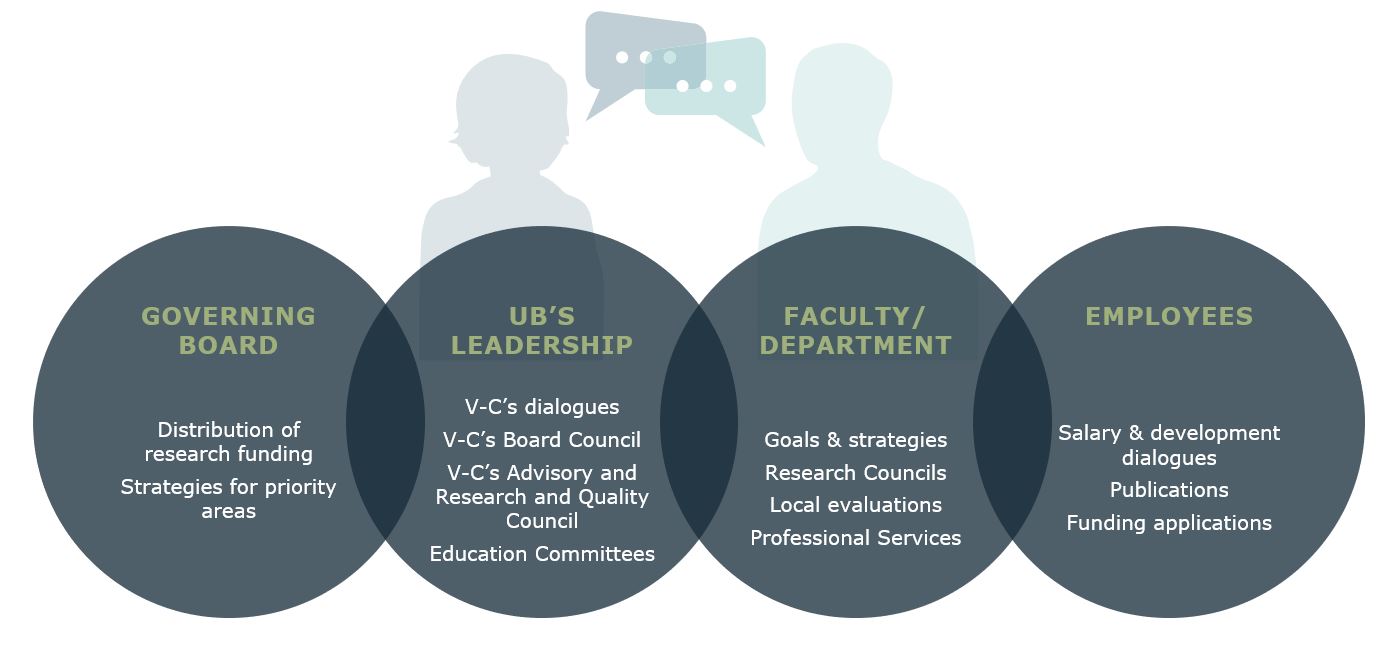 The ongoing quality monitoring follows a process established at the university, where monitoring and dissemination of good examples are based on a systematic preliminary work. This includes the development, decision and implementation of activities.
The ongoing quality monitoring follows a process established at the university, where monitoring and dissemination of good examples are based on a systematic preliminary work. This includes the development, decision and implementation of activities.
The ongoing monitoring also is the basis for the quality evaluations of the university's research activities carried out according to an established evaluation cycle.
Activities that are included in quality monitoring are, for example:
- Activity dialogues
- Strategies for research & research education
- Key figures
- Employee surveys
- Performance appraisals
Back to the parts of the quality process
Regular evaluation reviews the results of the research conducted at the University of Borås. The purpose of these evaluations is to identify strengths, weaknesses and areas of development. As a basis for the assessment, there are established criteria, a self-evaluation and the outcomes of the university's continuous monitoring. The results of the evaluations are the basis for action plans where concrete measures are listed. In cases where improvement measures are of a greater extent, resources are allocated to these. Otherwise, they are handled within the framework of the ordinary activity plans.
Evaluation is carried out via external review including an audit and is based on the six identified research areas at the University of Borås. A research area may consist of one or more evaluation units. Before each round of review, a decision is made on the research area's evaluation unit (s). An evaluation unit is assigned to an assessment group consisting of external and internal assessors.
The evaluation process for research basically follows the same logic as the evaluation process of the university's educational activities and is performed within the framework of a six-year cycle. The time period for the evaluation of a single evaluation unit in this cycle is 2.5 years from the initiation of the process until reporting has been made. These evaluations are planned to coincide and overlap with the evaluation cycle of education in a given environment. In relation to educational evaluation, research will be evaluated first.
The four stages of the evaluation process are:
- Initiation (June-December): Assessment units within the research area are decided, assessment documentation is prepared and the assessment group is appointed.
- Implementation (January-May): The assessment group is informed and assigned to the documentation, audits are performed and the assessment group compiles a report.
- Analysis (June-December): Analysis of the assessment group's report, after which an action plan is established.
- Reporting (January-December): The results of the evaluation are published and communicated. An implementation of the development measures should be listed in the action plan.
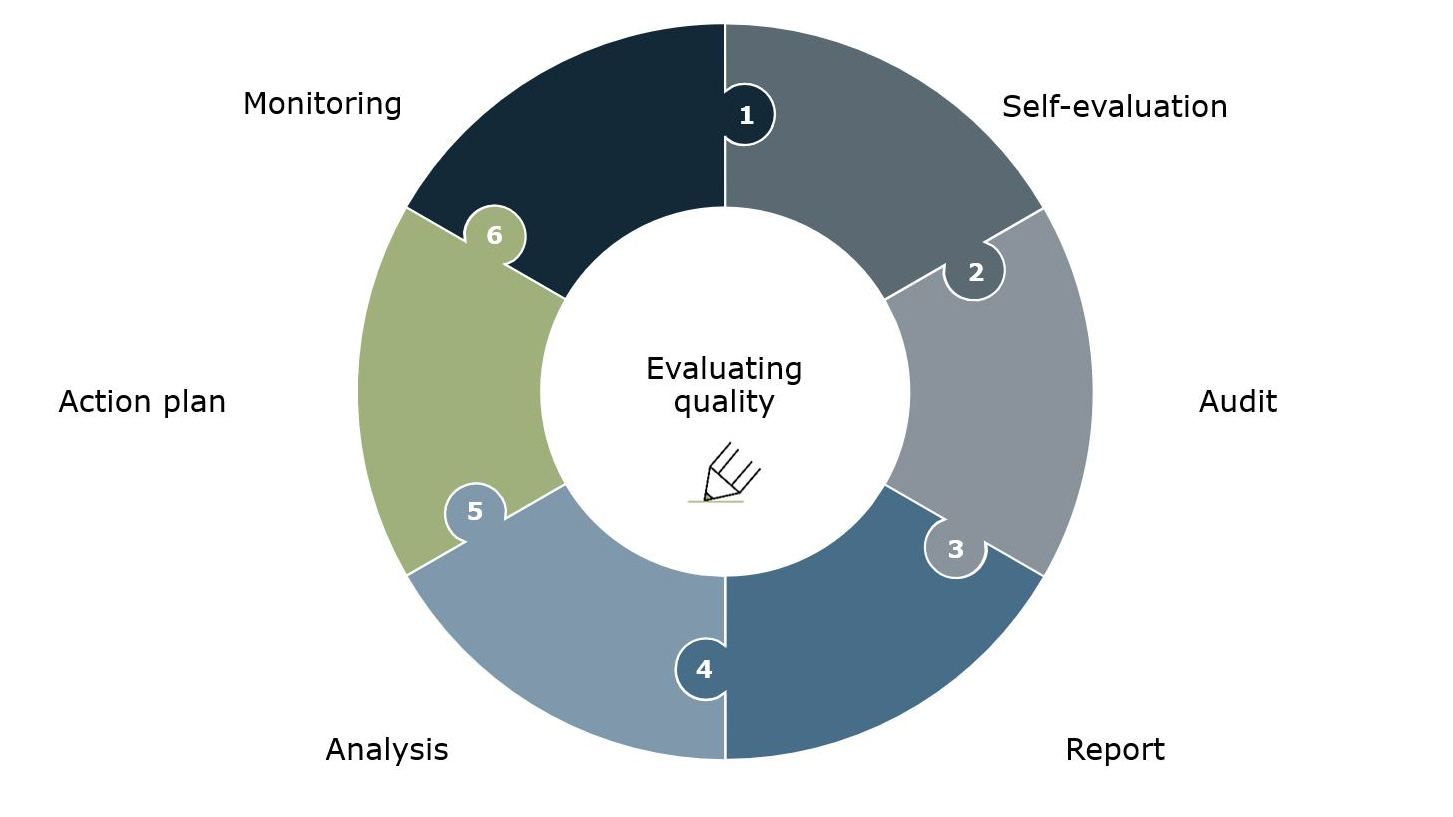
The first evaluation within the six-year cycle started during the autumn of 2020.
Back to the parts of the quality process
Quality development is ongoing and integrated into the continuous quality work, through continuous monitoring and a recurring external evaluation. The information the quality system generates continuously flows up and down in the organization and bind the total quality system of the University of Borås together. Good examples and routines should be disseminated and communicated between the different organizational levels of the university. All improvement measures must be feed backed to the prerequisites so that they in turn can be monitored and updated if necessary.
The renewal of research is also promoted by quality assurance of the university's research activities and the conditions of research based education.
For example, activities within the framework of quality development include work on:
- Handling of information generated from the quality system
- Dissemination of information
- Communication plans
Back to the parts of the quality process
Links to governance records and routines
• The University's "Policy for Quality Work at the University of Borås" (dnr 454-19) (Swedish only)
The basis for all quality work at the University of Borås.
• The University's "Guidelines for systematic quality work for research at the University of Borås (dnr 530-19) (Swedish only)
The guidelines describe the university's internal quality assurance work in research and highlight the principles, responsibilities and activities that form the basis for the work.
• The University's "Quality assurance system regarding research at the University of Borås" (Summary to decisions on no. 530-19, 531-19, 532-19, 533-19 and 534-19)
Describes the quality assurance system for research at the University of Borås.
• The University's "Evaluation cycle and rules regarding local evaluation of research at the University of Borås" (dnr 890-19)
Results from the locally initiated evaluation of research
The reviewers final report from the evaluation of Resource recovery (pdf)
Self-evaluation of Resource recovery (pdf)
Addition to resource recovery - building technology, final report (pdf)
Addition to resource recovery - building technology, self evaluation (pdf)



